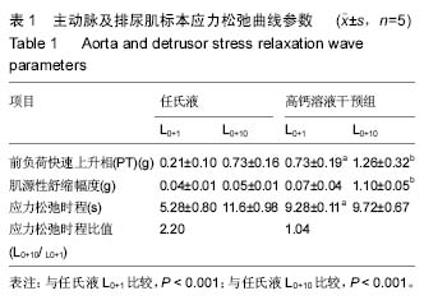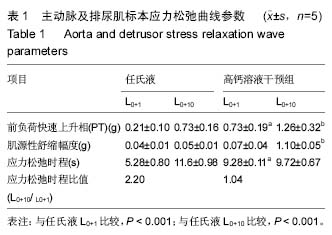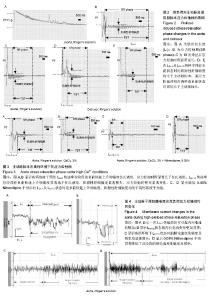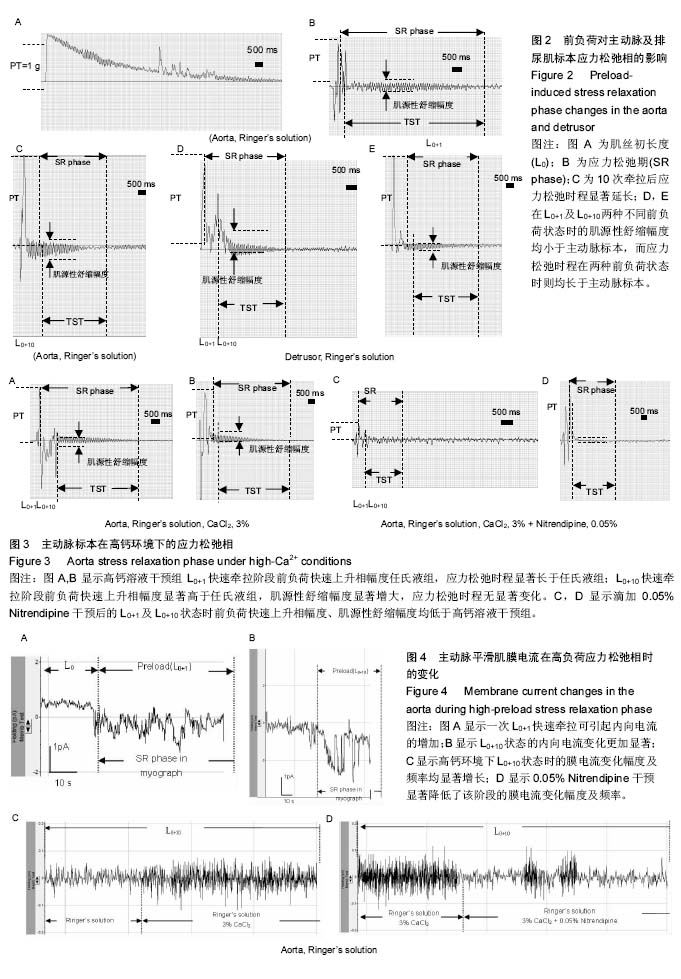| [1] Komari SO,Headley PC,Klausner AP,et al.Evidence for a common mechanism for spontaneous rhythmic contraction and myogenic contraction induced by quick stretch in detrusor smooth muscle. Physiol Rep. 2013; 1(6):e00168.
[2] Ko EA,Song MY,Donthamsetty R, et al. Tension Measurement in Isolated Rat and Mouse Pulmonary Artery. Drug Discov Today Dis Models.2010;7(3-4): 123-130.
[3] Lu X, Ghassan S. Kassab GS.Assessment of endothelial function of large, medium, and small vessels: a unified myograph.Am J Physiol Heart Circ Physiol.2011;300(1): H94–H100.
[4] Jespersen B, Tykocki NR, Watts SW, et al. Measurement of Smooth Muscle Function in the Isolated Tissue Bath-applications to Pharmacology Research.J Vis Exp. 2015;19(95):52324.
[5] Mulvany MJ.Procedures for investigation of small vessels using small vessel myograph. Department of Pharmacology, Aarhus University,Denmark.latest revision: August.2004.
[6] 孙亚志,朱俊铭,向求鲁,等.悬吊大鼠比目鱼肌血流量变化与肌肉力学特性的关系[J]. 航天医学与医学工程, 1992, 5(2):108-121.
[7] 熊顺华,新均,赵丹,等. 张力换能器应用于机能实验教学过程中的问题探讨[J].西北医学教育,2011,19(5):1027-1029.
[8] Colhoun A, Speich J, Dolat ME, et al.MP12-15 acute length adaptation and adjust preload tension in the human detrusor: The concept of a detrucor tension sensor. J of Urol.2015;193(4):Supplement e133.
[9] 徐晓雪,徐广涛,李小鹏,等. Militarine对离体大鼠胸主动脉环的舒张作用及机制研究[J].中华中医药学刊, 2015, 33(3):617-620.
[10] Zerpa JMP, Canelas A, SensaleB,et al. Modeling the arterial wall mechanics using a novel high-order viscoelastic fractional element. Appl Math Model. 2015;39(16):4767-4780.
[11] Ji G, Barsotti RJ, Feldman ME, et al.Stretch-induced Calcium Release in Smooth Muscle.J Gen Physiol. 2002; 119(6): 533-543.
[12] Zeidan A, Nordström I, Dreja K,et al.Stretch-Dependent Modulation of Contractility and Growth in Smooth Muscle of Rat Portal Vein.Circ Res. 2000;87(3):228-234.
[13] Gilbert G,Ducret T,Savineau JP,et al.Caveolae are involved in stretch-induced Ca2+ signaling in pulmonary hypertension.Rev Mal Respir. 2015;32(3):325–326.
[14] Weiser M, Majack RA, Tucker A,et al. Static tension is associated with increased smooth muscle cell DNA synthesis in rat pulmonary arteries. Am J Physiol Heart Circ Physiol. 1995;268(3):H1133-H1138.
[15] Mantella LE, Quan A, Verma S. Variability in vascular smooth muscle cell stretch-induced responses in 2D culture.Vasc Cell.2015;21(7):7.
[16] Ghosh S, Kollar B, Nahar T, et al.Loss of the mechanotransducerzyxin promotes a synthetic phenotype of vascular smooth muscle cells.J Am Heart Assoc.2015;4(6):e001712.
[17] Dangers M, Kiyan J, Grote K, et al.Mechanical stress modulates SOCS-1 expression in human vascular smooth muscle cells.J Vasc Res. 2010;47(5):432-440.
[18] Sanderson MJ, Delmotte P, Bai Y, et al. Regulation of airway smooth muscle cell contractility by Ca2+ signaling and sensitivity.Proc Am Thorac Soc. 2008;5(1):23-31.
[19] Ford LE,Gilbert SH. The significance of variable passive compliance in smooth muscle. J ApplPhysiol, 2007;102: 1735-1736.
[20] Ratz PH,SpeichJE.Evidence that actomyosin cross bridges contribute to "passive" tension in detrusor smooth muscle. Am J Physiol Renal Physiol.2010;298: F1424-F1435.
[21] Carre G,Ouedraogo M,Magaud C,et al.Vasorelaxation induced by dodoneine is mediated by calcium channels blockade and carbonic anhydrase inhibition on vascular smooth muscle cells.J Ethnopharmacol. 2015;169:8-17.
[22] Fernandes VS,Xin W,Petkov GV.Novel mechanism of hydrogen sulfide-induced guinea pig urinary bladder smooth muscle contraction: role of BK channels and cholinergic neurotransmission.Am J Physiol Cell Physiol. 2015;309(2):C107-116.
[23] Liu X, Yang T, Miao L, et al.Leukotriene B4 Inhibits L-Type Calcium Channels via p38 Signaling Pathway in Vascular Smooth Muscle Cells.Cell PhysiolBiochem. 2015;37(5):1903-1913.
[24] 李光伟,苗宏志,李波,等.钙敏感受体通过G蛋白-PLC-IP3信号途径调节肺动脉张力[J].中国病理生理杂志,2015;31(1): 18-22.
[25] Wan XJ,Zhao HC,Zhang P,et al.Involvement of BK channel in differentiation of vascular smooth muscle cells induced by mechanical stretch.Int J Biochem Cell Biol. 2015;59:21-29.
[26] Dalrymple A, Mahn K,Poston L,et al.Mechanical stretch regulates TRPC expression and calcium entry in human myometrial smooth muscle cells.Mol Hum Reprod. 2007; 13(3):171-179.
[27] Dangers M, Kiyan J, Grote K,etal.Mechanical stress modulates SOCS-1 expression in human vascular smooth muscle cells. J Vasc Res.2010;47(5):432-440 |



